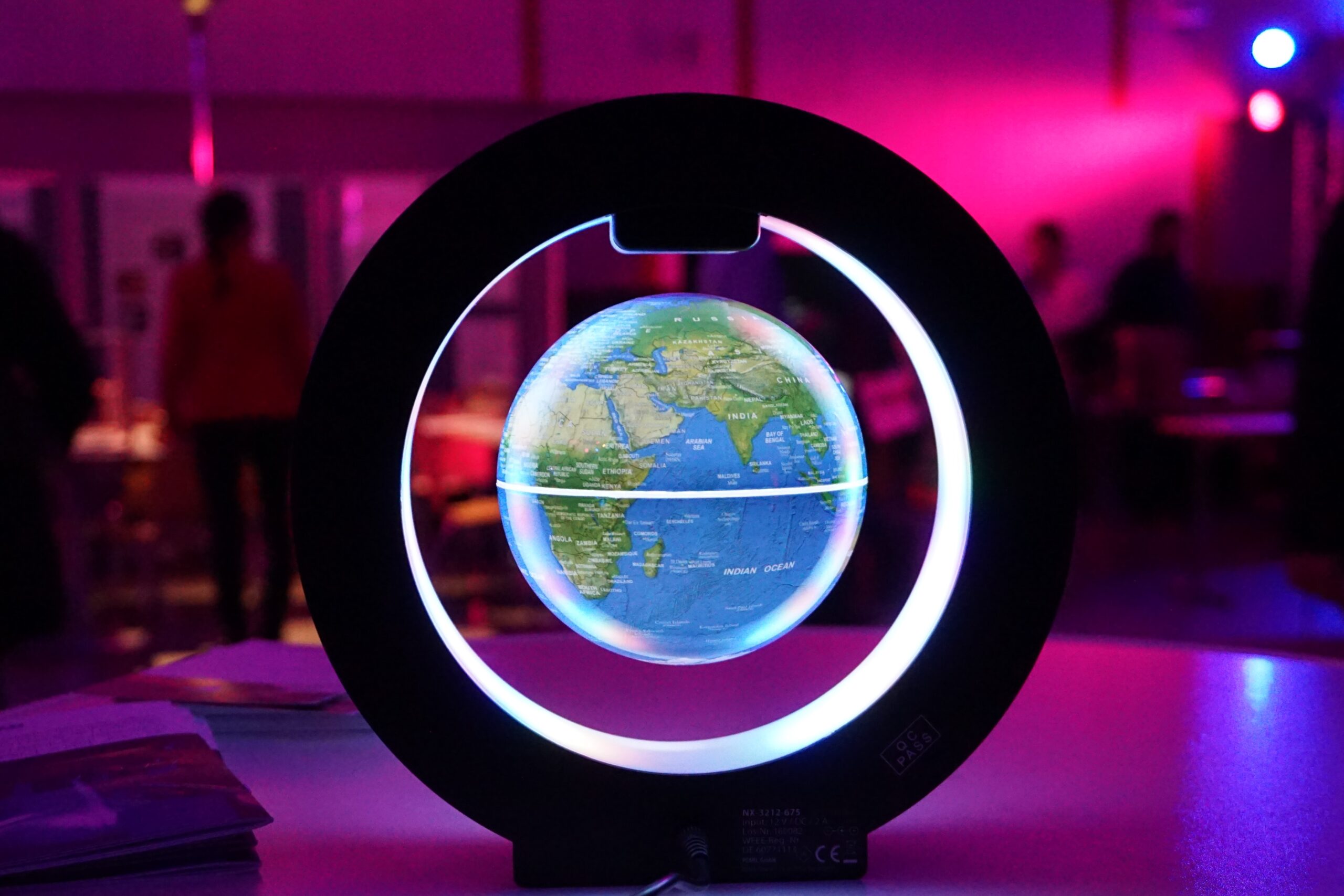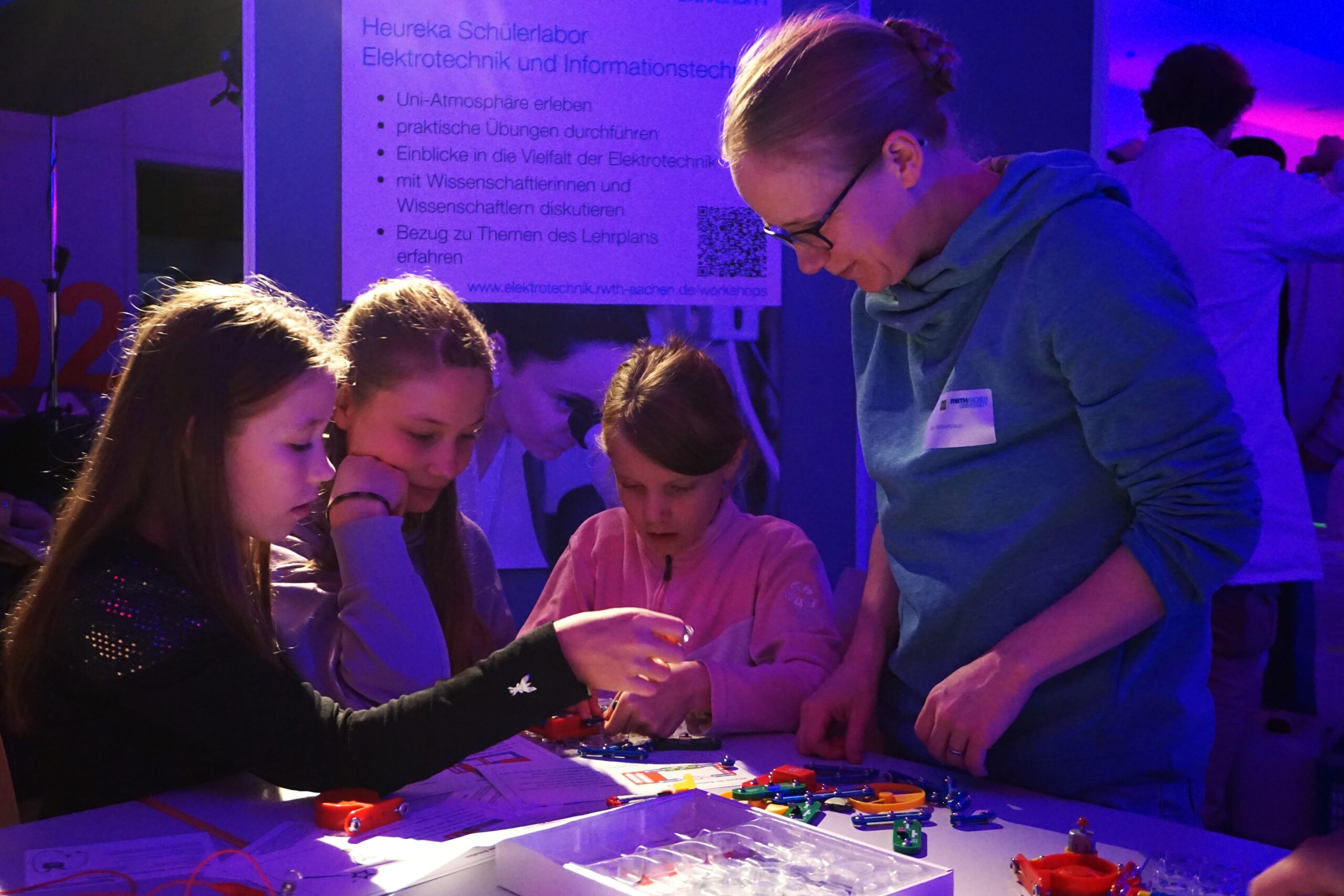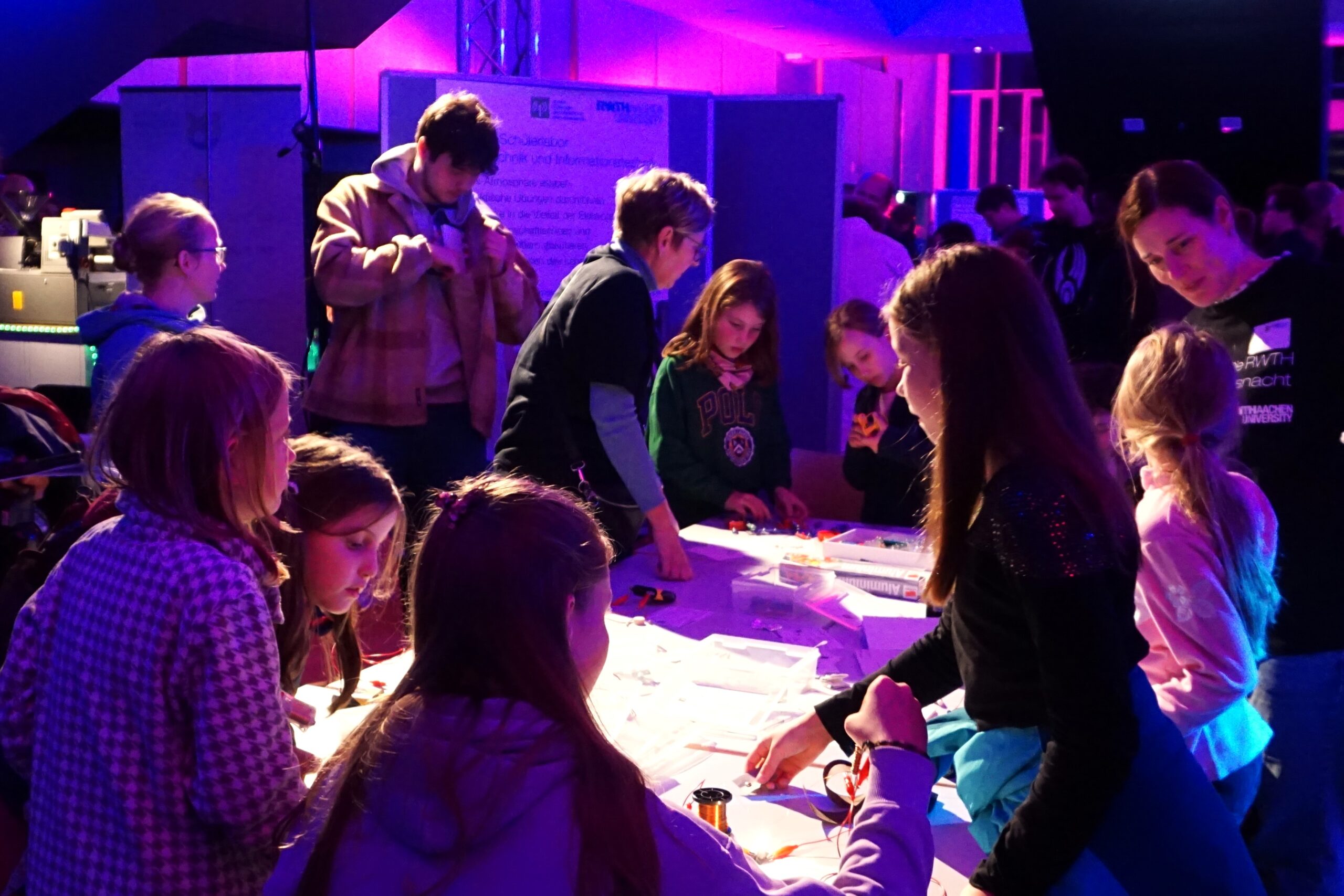
The magnetic globe rotates weightlessly on its own axis – just like in outer space
For the 20th time, RWTH Aachen University offered a glimpse behind the scenes. This time, 7,200 visitors, including many children, came to the C.A.R.L. auditorium between 6 p.m. and midnight to experience the world of research at close quarters.
What started out as a modest idea to present science at an unusual time, in an entertaining way and free of charge to anyone interested, has grown over the past 20 years into a mega-event that not only attracts thousands of guests, but also inspires the members of the university involved. Once again, the team of the Faculty of Electrical Engineering and Information Technology welcomed curious children of all ages and were on hand to help them with experiments.
With questions such as “Why isn’t the light on now?”, “How does that work?” or “Can I do one more experiment?” younger children followed their natural urge to discover new things.
The programme included reconstructing electrical circuits where they could visualise electric current as light or movement. They made switches, explored the magnetic and thermal effects of electricity, learned to distinguish between conductors and non-conductors, and finally became familiar with electricity.

Faculty members provide support when experimenting with electric circuits
Older children ‘already had this at school’ and enjoyed putting their theoretical knowledge to the test. But adults also found their way to our station, taking the opportunity to generate lightning with the influencing machine, thoughtfully lingering in front of the floating globe, or attentively studying the model of the power distribution network set up by the Chair of Automation of Complex Power Systems. The joy of experiencing research and progress together is clearly at the centre of the Science Night.
„We want to show in an entertaining way what RWTH has to offer – and in such a way that everyone who wants to know something can understand it,’ said Rector Ulrich Rüdiger.
The potential of the Science Night is therefore even greater, as it represents an important interface where the direct transfer of knowledge takes place in a social and cultural context. In line with the motto ‘from the laboratories to the people’, it makes an important contribution to promoting proximity between science and society.

The station of the Faculty of Electrical Engineering and Information Technology, equipped with numerous child-friendly experiments
The programme for this year’s Science Night took place in ten lecture halls and numerous seminar rooms. There were over 80 shows and lectures, experiments, talks and discussions. From Artificial Intelligence (the experts from the RWTH’s AI Centre had brought along the robot ‘Pepper’ for support) to the ‘Physics Fair’, from the latest information on the US elections and the spectacular ‘Fascination of High Voltage’ to the circular economy, floating Teslas and the construction site of the future. The range of topics was as colourful and diverse as the RWTH itself.
Further information on the programme, as well as impressions and experiences of the organisers – Department of Press and Communication, Section 3.2 – can be accessed via the links.




Leave a Reply